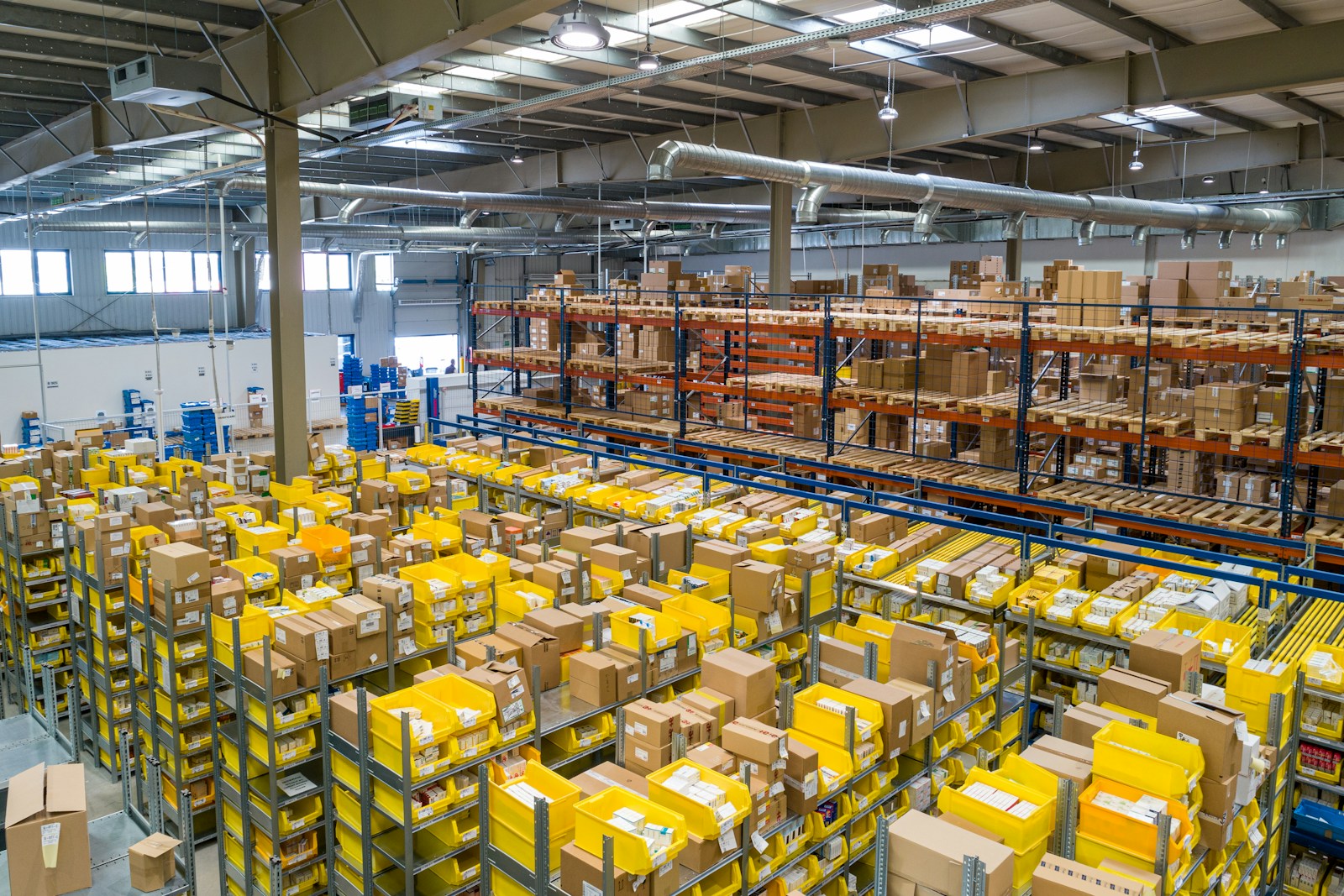Are you looking for a way to improve your shipping process? Are you looking for a way to integrate your Warehouse Management System with Transportation Management Software?
This article provides everything you need to know about integrating your WMS with transportation management systems. We will also discuss the benefits of WMS systems integration with TMS systems.
Learn how to improve your warehouse management system integration effort with the various techniques outlined below and get a better handle on your business processes.
How can a company benefit from a WMS integrated with a TMS?
Integrating WMS with TMS can significantly impact an organization’s operational efficiency. These two solutions were traditionally siloed in the past, but now, more and more companies want them connected to experience the many benefits this type of integration brings to their enterprise resource planning.
Integrating the WMS system creates increased visibility within your supply chain. It means you have a single platform that provides inventory information, and the systems communicate directly rather than via workarounds or tertiary channels.
Since integrating WMS and TMS offers one comprehensive view of the supply chain from start to finish, sharing information allows the team to work based on the same data. As a result, it makes adapting and reacting to any supply chain disruptions easier, which equals increased productivity.
Integrating your Warehouse Management System with Transportation Management Software has many benefits.
The main benefits of integrating TMS and WMS include…
Improved Data Accuracy
Integrating systems offers higher accuracy because the data no longer has to be manually entered, eliminating human error and oversight. In addition, more integration within operations helps ensure timely and accurate movements.
Increased operational efficiency
One of the main goals of integrating your WMS with your TMS is to improve operational efficiency. From inventory control to order processing and beyond to final mile delivery, the increase in visibility provides efficiencies that can be built into your services.
Enhanced workflow
Integrating your systems allows you to create enhanced workflows tailored to your needs. As a result, it can lead to improved efficiency and productivity. Increased automation and automated processes have many intangible benefits for an organization.
Ease of Use
Systems integration can provide better functionality and ease of use. Sharing data between the two systems and integrating the reporting into a single dashboard or interface can result in easier tools to leverage across the entire organization.
Reduced shipping costs
Integrating your WMS with your TMS allows you to ship your products more efficiently. You have greater visibility into order status and can communicate more effectively upstream and downstream.
Optimized Scheduling
WMS and TMS integration will go a long way in improving scheduling. It lets you see all the goods to be moved, the destinations, and the space available within trucks. You can plan better in advance, build greater efficiencies, and lower costs while scheduling your resources.
Optimized warehouse space
When you integrate the functions of your WMS with your TMS, you can use the area in your warehouse more efficiently. You can more effectively manage your warehouse functions and, in time, enable the scalability of your warehouse operations.
Improved Customer Service
A WMS integrated with a TMS can help you provide better customer service. Having better visibility of your inventory and distribution can help you avoid stock outages and late deliveries while providing reliable information to customers.
How does a WMS integrate with Transportation Management Software?
WMS solutions are designed to track inventory and handle warehouse tasks such as order picking, packing, and shipping. On the other hand, TMS solutions are created to optimize the transportation of goods.
The main goal of integrating a WMS with a TMS is to create a single source of truth for your company’s data. This way, you’ll have one platform to show you an accurate view of your supply chain.
When integrated correctly, the WMS and TMS can work together seamlessly to provide real-time updates on inventory levels, shipping status, and more.
This level of visibility is essential for making informed decisions about your logistics operations.
Some of the ways a WMS can integrate with a TMS
- Automatically updating inventory levels in the TMS when stock is received in the warehouse.
- Scheduling shipments in the TMS based on available inventory.
- Creating pick tickets in the TMS that are sent to warehouse workers for order fulfillment.
- Generating TMS reports showing warehouse KPIs such as order cycle time, picking accuracy, and more.
- Allow forecasting of performance over months or years to determine critical paths for increased success.
Example of a Connected WMS and TMS
The supply chain is already in motion long before a customer orders anything, whether for a retail shop to fill its shelves or for a customer who wants one product delivered straight to their home.
The WMS monitors inventory to see when it’s time to place another purchase for finished goods from the manufacturer or supplier. Then, it records when those items arrive at the distribution warehouse, where they are placed, and how efficiently they can be picked and prepared for shipment.
When the order is completed within the WMS, it is transferred to the TMS for the best freight arrangement, coordination support, and assurance that the products reach their destination.
When the WMS and TMS systems are integrated, the process is seamless. It can be easily tracked from inbound reception into the warehouse to the customer’s arrival.
The company can view everything in a single dashboard rather than through separate sales, warehousing, and shipping reports.
The challenges of integrating WMS and TMS
While there are many benefits to integrating your WMS with Transportation Management Software, there are also some challenges.
Not all warehouse management systems can integrate with transportation management software, so finding a WMS and TMS compatible with each other can be challenging.
And even if you find a WMS and TMS that can integrate, there is no guarantee that the integration will be seamless. There can be compatibility issues and data discrepancies that need to be ironed out.
Like in the case of change management, the key to success is to break down the process into manageable steps. But first, you must comprehensively understand your business strategy, operations, and approach. Only then can you effectively identify what needs improvement.
Defining your business case and goals will help you assess available resources, systems, and potential providers.
There is a wide range of systems, and each has its features.
You almost certainly don’t need all of them, so having a clear strategy will help you avoid getting caught up in the “shiny object” features that may look appealing but aren’t genuinely beneficial to your business.
Initially, you’ll need an integrated system suited to your basic requirements.
The advantages of having both systems integrated
To summarise, the main advantage of integrating your WMS with your TMS is that one platform can show you an accurate view of your entire supply chain.
The advantages of integrating your WMS with a TMS are many. But here are the three most important ones:
Improved data accuracy: When one system contains all your data, you can be confident that the information is accurate and up-to-date. It is vital to make informed decisions about your supply chain operations.
Increased operational efficiency: An integrated system enables you to automate tasks and processes that would be done manually. This can free up time for your staff to focus on more strategic tasks.
Optimized cost: When your WMS and TMS are integrated, you can take advantage of real-time inventory levels and shipping status visibility. This level of visibility enables you to make informed decisions about where to source materials and how to route shipments.
Tips on how to get started with a WMS Integration project
If you’re thinking about integrating your WMS with Transportation Management Software, here are a few tips to get started:
- Define your goals and objectives. What do you hope to achieve by integrating the systems?
- Conduct a feasibility study. This will help you determine if integrating your WMS with TMS is the right solution for your business.
- Choose the right partner. When you’re ready to start, you’ll want a partner with extensive WMS integration experience to help walk you through the process.
- Research different WMS and TMS platforms. What features do they offer? Which one is the best fit for your company?
- Test and Train. Before you go live with your new system, make sure to test it thoroughly. You’ll also need to ensure each team member working within the systems is well-trained.
By following these tips and change management standards, you can ensure a successful WMS integration with a TMS.
Bottom Line
WMS integration with Transportation Management Software can bring many benefits to businesses.
It offers one comprehensive view of your supply chain from start to finish. It can significantly optimize your operational costs and improve your bottom line.
If you’re considering integrating your WMS with a TMS, do your research and work with a team of experts. With the proper planning and execution, you can realize the full potential of integrating these robust systems.








